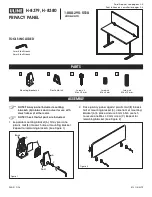
3410 Series Gas Ultrasonic Meters Operations Manual
Section 6: Archive logs
3-9000-777 Rev E
January 2018
Event log: alarm/audit
111
6.2
Event log: alarm/audit
The meter monitors several data points with respect to each point’s alarm limit(s). Non-boolean
data points can have low and high alarm limits. Boolean data points only have a single alarm
limit (i.e., either TRUE or FALSE). There are two statuses associated with alarms: set and cleared.
An alarm is set when the data point is at or exceeds its alarm limit. An alarm is cleared when the
data point is within its alarm limit(s).
The Daniel 3410 Series Ultrasonic Flow Meter stores an alarm log record whenever any
monitored data point’s alarm status (cleared or set) changes. The alarm log record indicates the
data point, date and time, alarm status, corresponding alarm limit, and data point value.
The meter can store up to 3000 alarm records. The user can select whether old, unread records
can be overwritten by new records when the log becomes full via the data point
DoOverwriteUnreadAlarmLog
. This point can be modified using the Daniel MeterLink
Tools|Edit/Compare Configuration
screen. The default is to overwrite old, unread records. Refer
to
“Options for reading audit, alarm, and/or system log records”
for information on reading
records and marking records as read. The data point
IsAlarmLogFull
indicates whether or not the
alarm log is full and cannot overwrite old, unread records.
The user-settable data points
AlarmTurnOffHysterisisCount
and
AlarmTurnOffHysterisisTimeSpan
are used to prevent very repetitive alarms from filling up the alarm log. When an alarm is set
AlarmTurnOffHysterisisCount
times within
AlarmTurnOffHysteresisTimeSpan
seconds, then the
alarm is suppressed until the alarm frequency drops below the specified rate (counts per
time span) at which point the next alarm clearing “unsuppresses” the alarm. The alarm log
records indicate when an alarm suppression is started and ended. The default values are
8 occurrences in 240 seconds.
















































